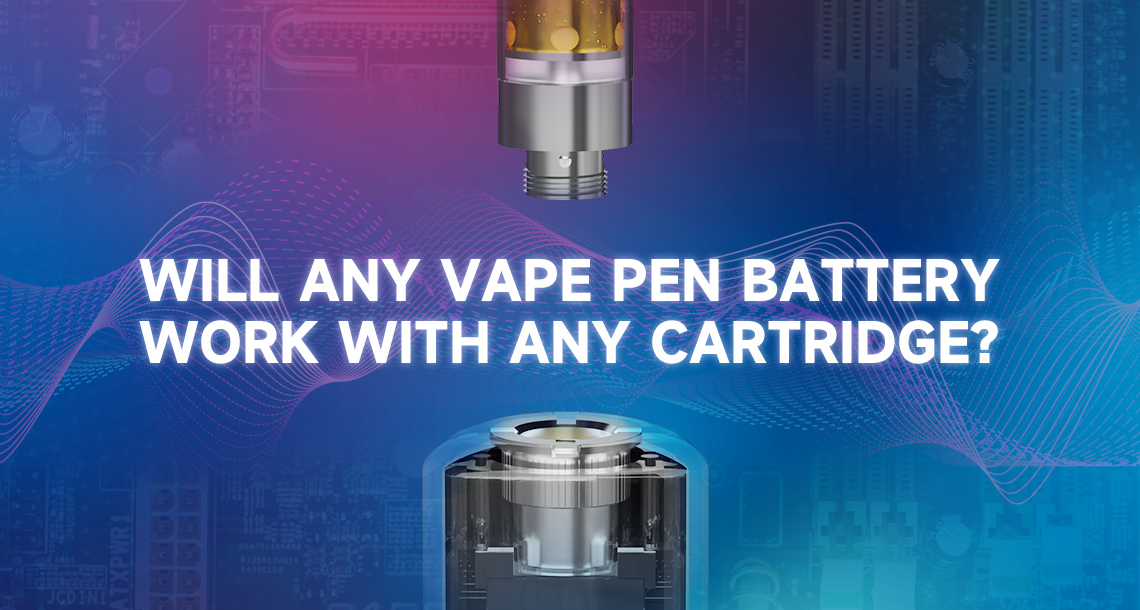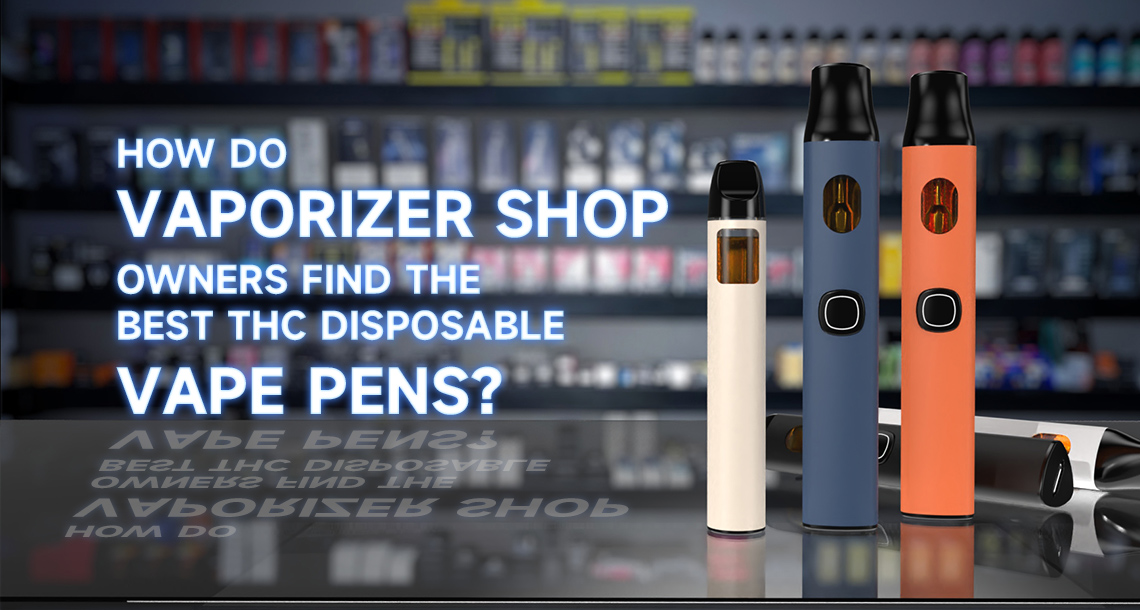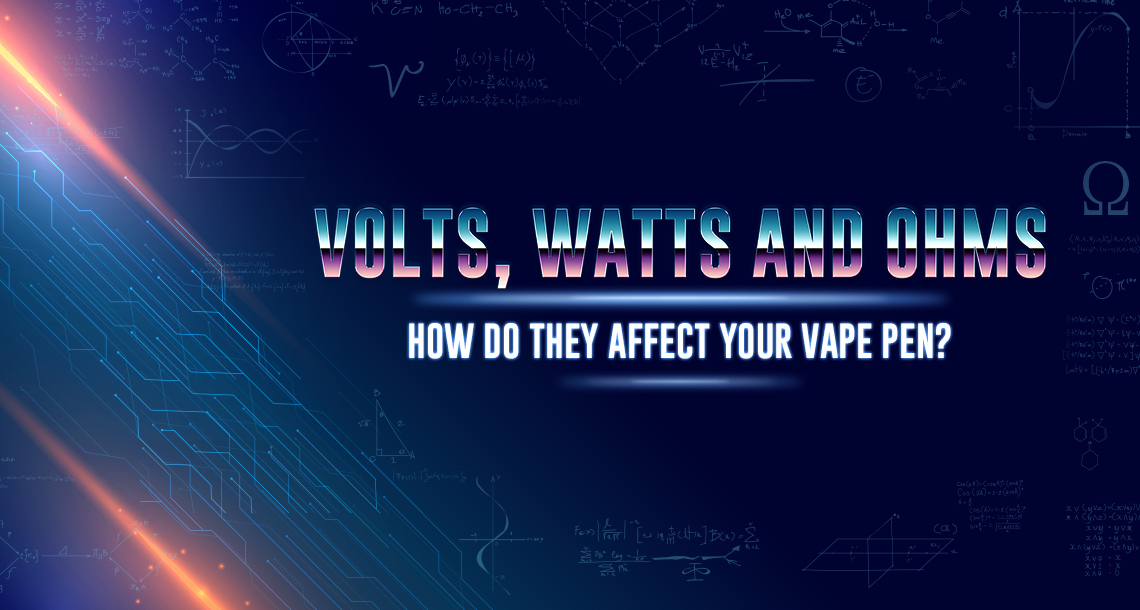
Will Any Vape Pen Battery Work with Any Cartridge?
February 23, 2023
How Do Vaporizer Shop Owners Find the Best THC Disposable Vape Pens?
March 1, 2023
Will Any Vape Pen Battery Work with Any Cartridge?
February 23, 2023
How Do Vaporizer Shop Owners Find the Best THC Disposable Vape Pens?
March 1, 2023
Volts, Watts and Ohms – How Do They Affect Your Vape Pen?
If you’re a user of a THC vape pen, you may have heard terms like volts, watts, and ohms being thrown around when you browse product websites or view product user manuals.
These terms are related to the electrical properties of your vape pen and understanding them can help you optimize your vaping experience.
So, what are volts, watts, and ohms and how do they affect your THC vape pen?
Volts
Volts (V) is a measure of electrical potential difference, which is the difference in electrical potential between two points in a circuit. In the context of a vape pen, volts are used to determine the amount of electrical current that flows through the heating element (coil) of the vape pen.
The higher the voltage, the more current will flow through the coil, which will result in a higher temperature and more vapor. However, if the voltage is too high, the coil can burn out or the battery can overheat. When you vape, you will inhale the smell of burnt metal or plastic, and the life of the atomizer will be greatly shortened.
It’s important to note that different types of cartridges or atomizers may have different voltage requirements, so it’s important to consult the vape pen manufacturer’s recommendations before adjusting the voltage on your vape pen.
Watts
Watts (W) is a measure of electrical power, which is the amount of energy that is transferred per unit of time. In the context of a vape pen, watts are used to determine the amount of heat that is produced by the coil.
The higher the wattage, the more heat will be produced by the coil, which will result in a higher temperature and more vapor. However, if the wattage is too high, the coil can burn out or the battery can overheat.
It’s important to note that the wattage that is appropriate for your vape pen will depend on the resistance of the coil (ohms), as well as the voltage that is being used. To calculate the appropriate wattage for your vape pen, you can use the following formula:
Watts = (Volts)^2 / Resistance (ohms)

Ohms
Ohms (Ω) is a measure of electrical resistance, which is the degree to which a material opposes the flow of electrical current. In the context of a vape pen, ohms are used to determine the resistance of the coil.
The lower the resistance (measured in ohms), the more electrical current will flow through the coil, which will result in a higher temperature and more vapor. However, if the resistance is too low, the coil can burn out or the battery can overheat.
It’s important to note that different types of cartridges or atomizers may have different resistance requirements, so it’s important to consult the manufacturer’s recommendations before adjusting the resistance on your vape pen.
Resistance levels
Here’s an overview of the features of vaping for various atomizer resistance levels:
- High resistance (1.5 to 2.8 ohms): High-resistance atomizers require less power to heat up the oil, which means they use less battery power and produce less vapor. High-resistance atomizers also tend to produce a more intense flavor and a stronger throat hit.
- Medium resistance (0.9 to 1.5 ohms): Medium resistance atomizers are a good choice for vapers who want to experiment with different vaping styles and prefer a balance between flavor and vapor production.
- Low resistance (0.5 to 0.9 ohms): Low-resistance atomizers require more power to heat up the oil and produce more vapor than high or medium-resistance atomizers. They are popular among cloud chasers who want to produce large clouds of vapor. Low-resistance atomizers tend to produce a less intense flavor and a smoother throat hit than high-resistance atomizers.
How do volts, watts, and ohms work together?
Volts, watts, and ohms are all related to one another and they work together to determine the temperature and vapor production of your vape pen.
If you increase the voltage on your vape pen, this will increase the current that flows through the coil and will result in a higher temperature and more vapor. However, if you increase the voltage too much, the coil can burn out or the battery can overheat.
To adjust for this, you can decrease the resistance of the coil (measured in ohms), which will allow more current to flow through the coil without causing it to overheat.
You can also adjust the wattage on your vape pen to control the amount of heat that is produced by the coil. If you increase the wattage, this will increase the heat that is produced by the coil, which will result in a higher temperature and more vapor. However, if you increase the wattage too much, the coil can burn out or the battery can overheat.
To adjust for this, you can decrease the voltage on your vape pen, which will decrease the amount of current that flows through the coil and will prevent it from burning out.
It’s important to note that different types of cartridges or atomizers may have different voltage, wattage, or resistance requirements, so it’s important to consult the manufacturer’s recommendations before adjusting any of these settings on your vape pen.
Additionally, it’s important to be aware of the potential risks associated with using a vape pen. Some vape pens may use low-quality materials or may not have proper safety features, which can increase the risk of overheating, explosion, or other hazards.
When using a vape pen, it’s important to always follow the manufacturer’s instructions and to use the device safely and responsibly. This includes monitoring the temperature of the coil and the battery, as well as being aware of any potential signs of overheating or other hazards.
Conclusion
In summary, volts, watts, and ohms are all important factors that can affect the temperature and vapor production of your THC vape pen. By understanding how these factors work together, you can optimize your vaping experience and ensure that you are using your device safely and responsibly. However, it’s important to always follow the manufacturer’s instructions and to be aware of the potential risks associated with using a vape pen.
One way to optimize your vaping experience is to experiment with different voltages, wattages, and resistance settings to find the sweet spot that provides the best flavor, vapor production, and overall satisfaction. This can be a trial-and-error process, but it’s worth it to find the ideal settings that work for you.